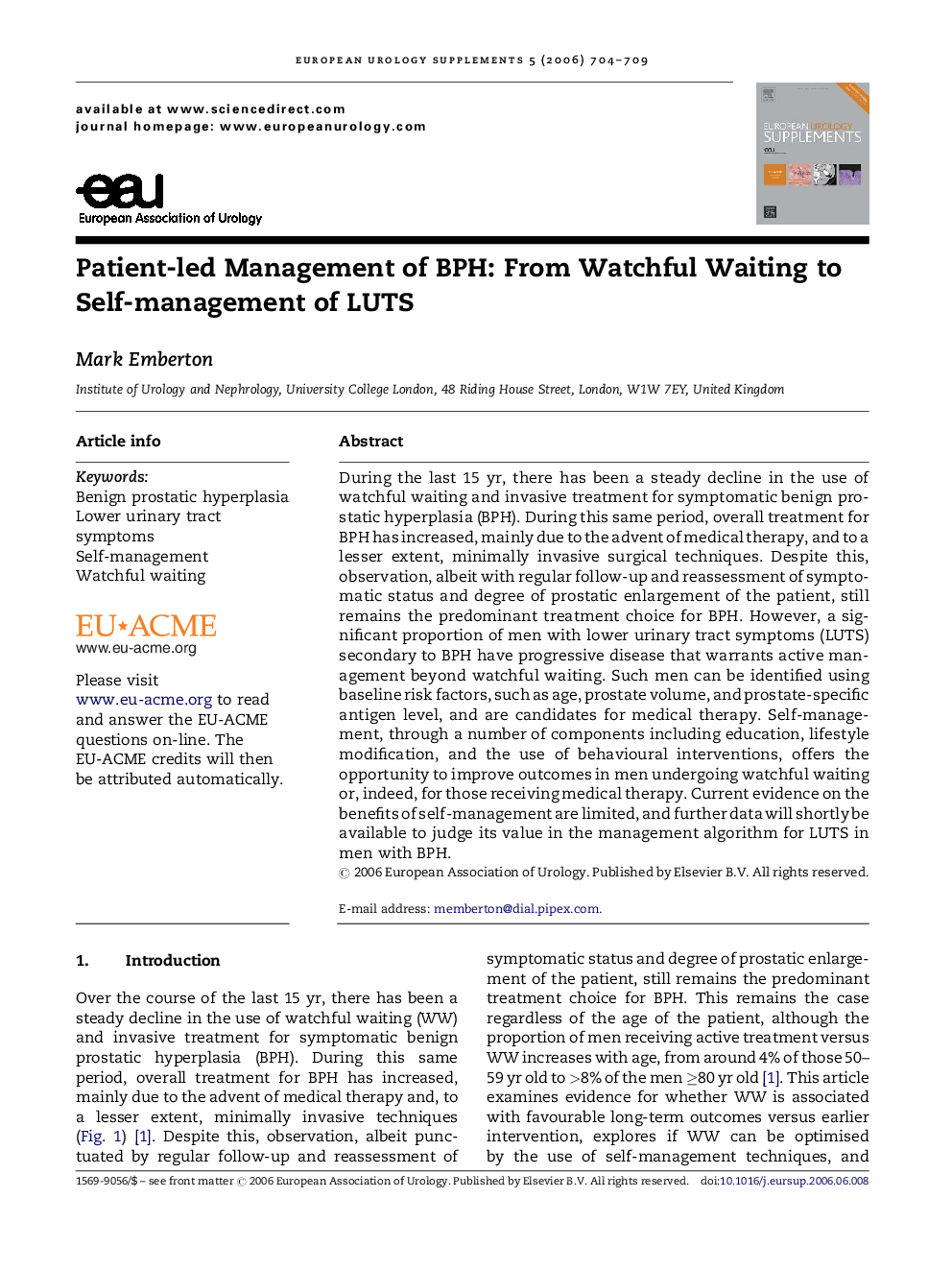| Article ID | Journal | Published Year | Pages | File Type |
|---|---|---|---|---|
| 3935474 | European Urology Supplements | 2006 | 6 Pages |
During the last 15 yr, there has been a steady decline in the use of watchful waiting and invasive treatment for symptomatic benign prostatic hyperplasia (BPH). During this same period, overall treatment for BPH has increased, mainly due to the advent of medical therapy, and to a lesser extent, minimally invasive surgical techniques. Despite this, observation, albeit with regular follow-up and reassessment of symptomatic status and degree of prostatic enlargement of the patient, still remains the predominant treatment choice for BPH. However, a significant proportion of men with lower urinary tract symptoms (LUTS) secondary to BPH have progressive disease that warrants active management beyond watchful waiting. Such men can be identified using baseline risk factors, such as age, prostate volume, and prostate-specific antigen level, and are candidates for medical therapy. Self-management, through a number of components including education, lifestyle modification, and the use of behavioural interventions, offers the opportunity to improve outcomes in men undergoing watchful waiting or, indeed, for those receiving medical therapy. Current evidence on the benefits of self-management are limited, and further data will shortly be available to judge its value in the management algorithm for LUTS in men with BPH.
